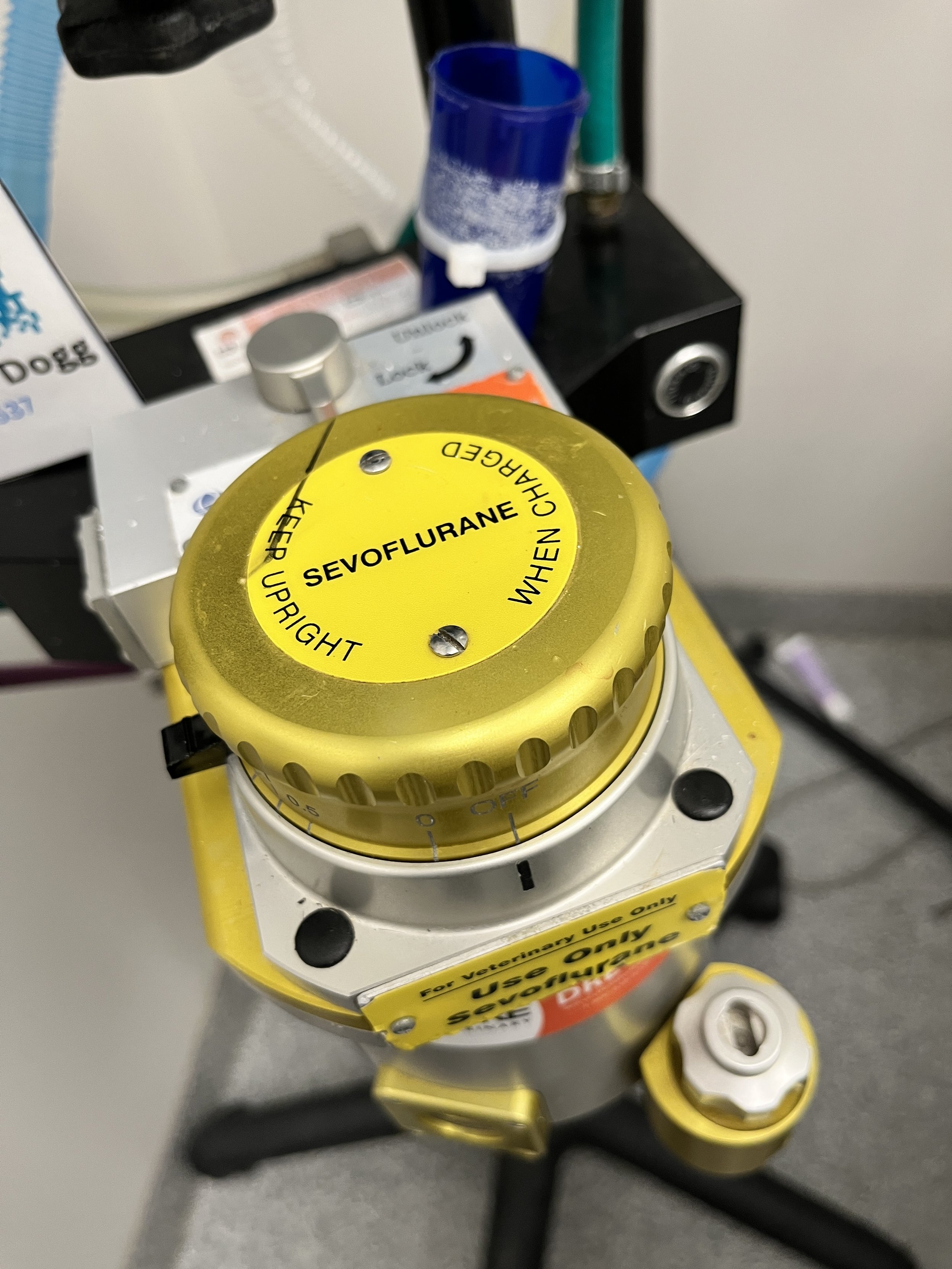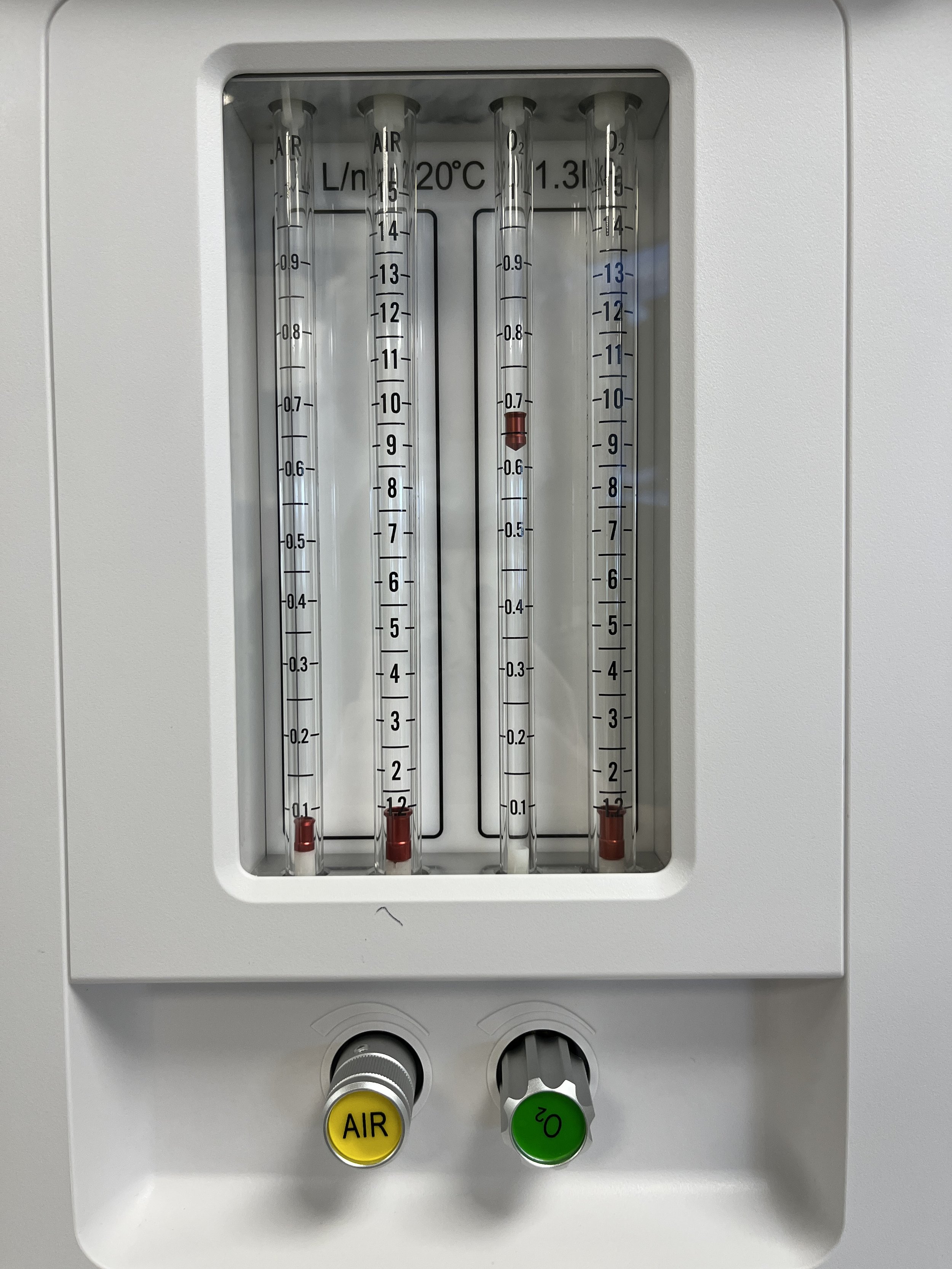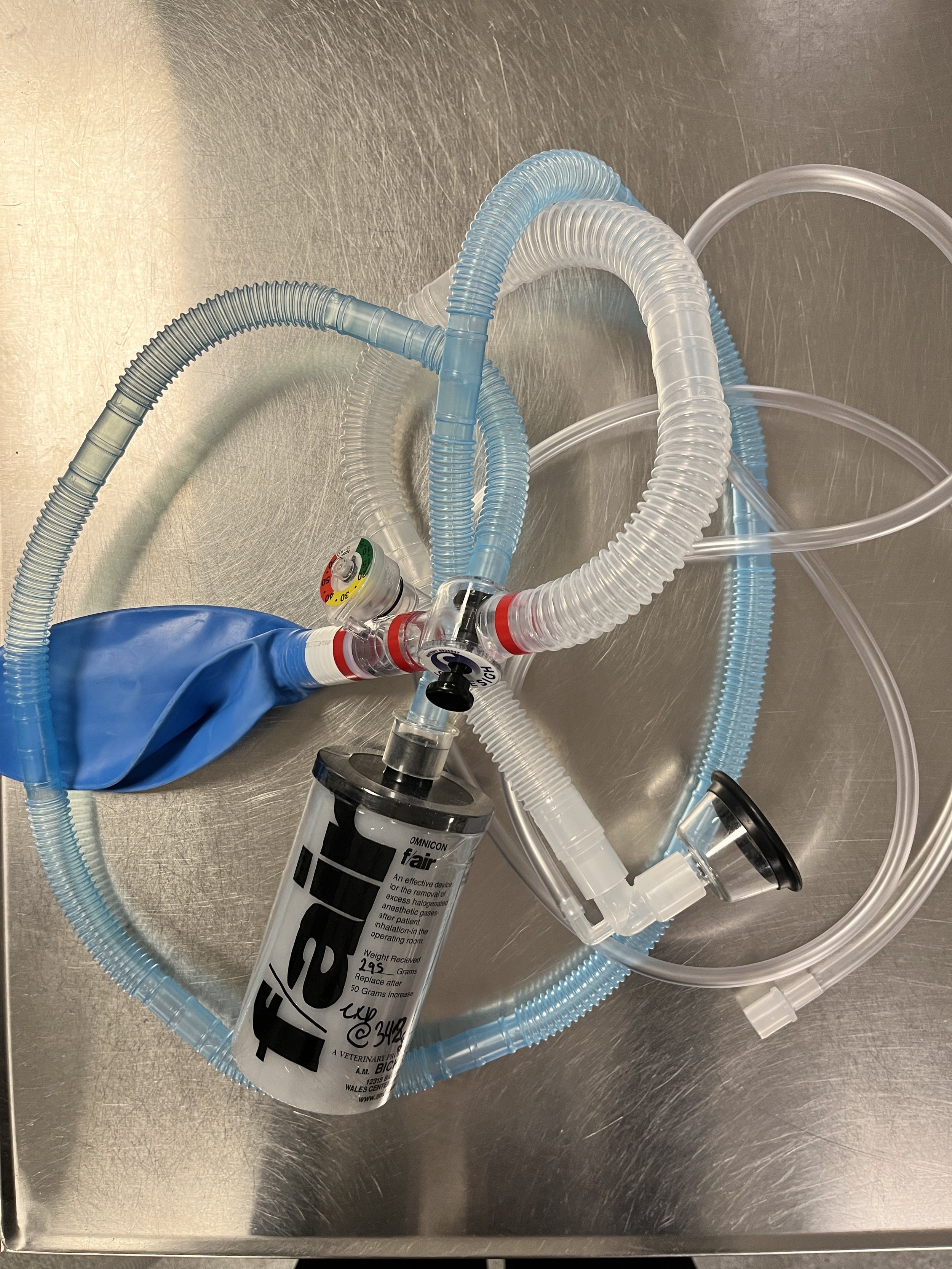Blog Articles
When a balanced anesthesia drug protocol has been utilized most of our patients will wake up smoothly from general anesthesia. Unfortunately, despite our best efforts, there will be times when a patient wakes up and displays a rough recovery.
When the vaporizer is turned on to a certain percentage the patient does not immediately see that concentration of inhalant in their brain. For that inhalant concentration to be seen in the patient's brain the inhalant must diffuse across several partial pressure gradients.
Dead space volume is the volume of gas that does NOT participate in gas exchange (e.g., there is no exchange between O2 and CO2). No matter what we do from an anesthesia standpoint there will always be some degree of dead space present in our patients.
The oxygen flow rate is determined by the type of circuit that you are using and the patient's lean body weight (kg). It is typically quoted as a mL/kg/min rate and should be calculated for every patient, every time!
The reservoir bag should be at least 4 to 6 times the patient's tidal volume. Tidal volume is often quoted as 10-20 mL/kg. The middle value, 15 mL/kg, is commonly used in small animals. If 15 mL/kg is multiplied by 4 and 6 then 60 and 90, respectively, become constants.
Breathing systems are classified into two broad categories: Rebreathing circuits and Non-rebreathing (NRB) circuits.
Unfortunately, there are no standard of care guidelines available for cleaning breathing circuits in veterinary medicine, so it is going to be strictly the decision of the individual hospital to do what they feel is best.
Butorphanol is an agonist-antagonist opioid that has a long history in veterinary medicine for “pain relief” and sedation.









The measurement of end tidal CO2 (ETCO2) is currently the optimal method of non-invasively and continuously monitoring the adequacy of ventilation and circulation in veterinary patients. The ETCO2 monitor measures expired carbon dioxide. This measurement can be used to evaluate adequacy of ventilation, metabolic status and circulatory status. (Moens, 2010) This is different than the pulse oximeter which is used to measure hemoglobin and saturation with oxygen.